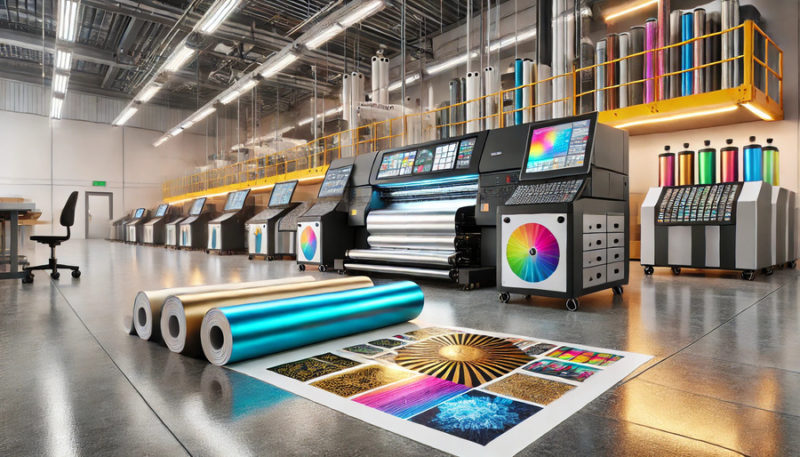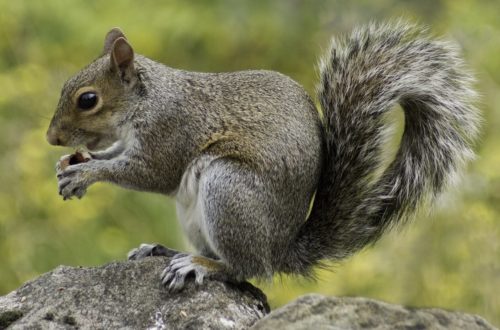7 Best Printers for Specialty Finishes for POD Applications

For any print-on-demand (POD) operation, a printer capable of fast, high-quality printing is the bare minimum. Printers that include finishing techniques — like embossing, gloss or spot ultraviolet (UV) — take POD printing to the next level.
What are the best printers for specialty finishes like metallics, clear overlays or textured coatings for POD applications?
1. Fujifilm Revoria Press PC1120
The Revoria Press PC1120 from Fujifilm is the leading printer for specialty finishes in POD applications. This high-resolution digital toner press supports an expansive range of media types and inline finishing options. It also has an industry-leading color gamut.
This printer has an advanced engine with 10 colors, including pink, gold, silver, white and clear specialty toners. You can apply the metallics or clear overlays to specific graphics or backgrounds to add dimension or create unique effects.
The state-of-the-art laser system enables efficient single-pass printing. With a print speed of 120 pages per minute (ppm), a 2400 x 2400 dots per inch (dpi) resolution and a minimum 2,000 sheet capacity, you can create high-quality prints quickly. This model even boasts inline features for folding, trimming, creasing and full-bleed printing.
Unlike other printers, the Revoria Press PC1120 has a configurable layout. This flexibility makes it ideal for almost any workspace. It also boasts artificial intelligence image correction to ensure optimal print quality without sacrificing speed. This printer’s cutting-edge capabilities, high dpi and color variety put it in the top spot for the best POD printers for specialty finishes.
2. Xerox Iridesse Production Press
The Iridesse Production Press from Xerox supports coated and uncoated media. While it comes with the standard colors used in the four-color printing process — cyan, magenta, yellow and black (CMYK) — you can add two specialty dry inks. Your options are white, clear, gold, silver and fluorescent pink.
This production printer supports inline embellishment options for versatile finishing. You can have a metallic overlay or create clear spot effects. Whatever you print has a maximum 2400 x 2400 dpi resolution, ensuring high-precision quality.
This printer boasts a 120 ppm, totaling up to 475,000 pages monthly. Media can be as small as 7.2 inches by 7.2 inches or as large as 13 inches by 47.24 inches, ranging from 52 to 400 grams per square meter (gsm). With optional additions, its capacity reaches 12,500 sheets.
3. Ricoh Scodix Ultra 2500 SHD
The Scodix Ultra 2500 SHD by Ricoh has 16 specialty finishing options. In addition to matte, gloss, foil and spot UV, it supports high-definition embellishments, colorful metallics, holographic effects, three-dimensional tactile elements and raised foil glitter.
There are application-specific finishes, as well. Scodix Braille creates 3D dots to comply with the Americans with Disabilities Act. Scodix Crystal is a one-of-a-kind application that uses polymer to build 3D, rhinestone-like objects. Scodix Security creates custom anticounterfeit elements with layered embellishments.
This versatile digital embellishment press can print on transparent, coated or uncoated media. It supports media as large as 21.45 inches by 31.02 inches at up to 2540 x 450 dpi, so brochures, posters, banners, postcards and print ads are fair game.
The Ultra 2500 SHD comes fully equipped with every premium Scodix technology in B2 format, making it ideal for marketing agencies, commercial publishers and specialty printing providers.
4. Canon ColorStream 8000 Series
At up to 200 ppm, Canon’s ColorStream 8000 Series is one of the most efficient options. Despite using water-based pigment inks, it excels at high-volume printing. Since it supports uncoated, pretreated, recycled, inkjet-treated and coated media, it is ideal for POD applications that require specialty finishes like textured surfaces or clear overlays.
The Canon ColorStream 8200 has a native 1200 x 1200 dpi, ensuring its output is consistently high-quality and colorful. Input dimensions extend from 6.49 inches by 4.01 inches to 22.5 inches by 60 inches. Media weight ranges from 40 to 120 gsm.
Like other models on this list, Canon’s ColorStream 8000 Series printer has an easy-to-use touchscreen for streamlined settings adjustments. One of its more unique aspects is automated printhead cleaning, which unclogs nozzles to ensure optimal print quality.
5. Epson SureColor V7000
The Epson SureColor V7000 flatbed printer uses 10-color UltraChrome UV ink, including a UV curable varnish for a glossy finish. It also has white ink for dark and transparent media. You can take advantage of the multilayer printing function to create unique specialty finishes.
Epson’s flatbed printer can print on various substrates, including rigid objects like foam and poster boards. This allows you to make in-ground signage and posters. The size limit is about 182.48 inches by 68.11 inches, allowing you to create anything from tall posters to wide banners. The maximum weight is 50 kilograms per square meter.
Whether you use plain paper or thick poster board, a thickness sensor will adjust internal mechanisms automatically, enabling you to seamlessly print on media up to 3.14 inches thick. This feature can streamline POD production.
A touchscreen interface and remote connectivity make this printer convenient. With Epson Cloud Solution PORT, you can monitor a live view of equipment utilization, production and service information on your mobile phone or desktop.
6. Sharp BP-1200S
For neon and metallic finishing options, the Sharp BP-1200S from the Color Press Series is one of the best options. While the Color-Logic Metallic Color System supports silver and gold underlays, the Touch7 Neon Color System lets you add fluorescent cyan, yellow and pink ink.
While the standard 6-color printing setup is not as robust as Fujifilm’s 10-color print engine or Epson’s 10-color UltraChrome UV, it is still more versatile than many other models. You can augment standard CMYK inks with up to two specialty pigments. You can also layer or combine these toners to create metallic effects or spot colors.
If you need to swap cartridges, you can do so with almost zero waste. This function is convenient because the nature of POD often necessitates fast changeovers in between custom jobs. If a jam occurs, the purge function will automatically eject misfeeds.
Sharp’s BP-1200S supports a broad range of media types. Whether you want to create a full-bleed poster or a colorful banner, the small particle toner will deliver a smooth, professional-looking finish.
This Sharp printer can print as many as 120 ppm at 2400 x 2400 dpi. Since it has a maximum sheet capacity of up to 13,250 sheets, you won’t have to worry about falling behind. The 27-inch, high-resolution display can help you further streamline the printing process.
7. Konica Minolta AccurioPress C4080
The AccurioPress C4080 from Konica Minolta has advanced inline features, including stapling, binding, trimming and stacking. Unlike other models, the AccurioPress C4080 has a 3600 x 2400 dpi resolution, resulting in a high-quality, extremely detailed print. Even if you create long duplex sheets, your prints will still look crisp and pristine.
While this model’s maximum print speed is just 80 ppm, it supports a wide range of media dimensions, reaching about 13 inches to 51.18 inches. It also has one of the highest weight limits at 360 gsm. Whether you want to print on embossed paper or envelopes, you can count on this printer. The maximum sheet capacity of 15,390 can help streamline POD production.
Choosing Between the Best Printers for Specialty Finishes
Now that you know what the best printers for specialty finishes like metallics, clear overlays or textured coatings for POD applications are, you need to decide between them. While any one of these models could meet your needs, you should consider value, price, size and features. Is a touchscreen important to you? Would you prefer efficient lasers over water-based inks?
You should also review each printer’s technical specifications. Features like dpi, ppm, sheet capacity and color gamut could affect your timeline. The last major consideration involves pigments. A printer’s metallic, matte, neon or gloss finishing options may influence your purchasing decision.
Would you like to receive similar articles by email?




